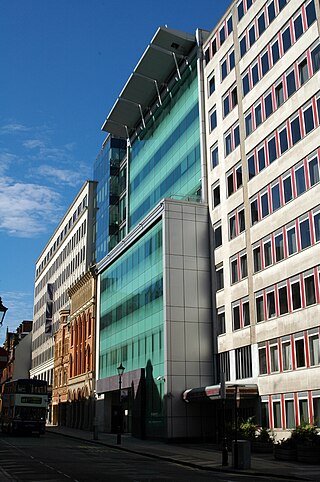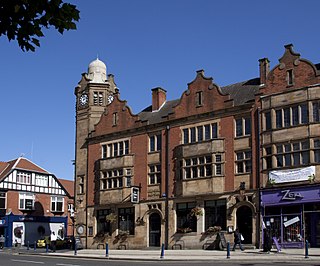

The Moseley Conservation Area is in Moseley, Birmingham.


The Moseley Conservation Area is in Moseley, Birmingham.
The conservation area was designated on 17 March 1983. It was extended on 12 November 1987 and 14 March 2005 and now comprises an area covering 95.06 hectares (234.9 acres). [1] [2]
The opening of Moseley railway station in 1867 started a property boom in Moseley, which was accelerated by the arrival of steam driven tramway services to Birmingham provided by the Birmingham Central Tramways Company Ltd which started operating on 29 December 1884. [3] Moseley was an attractive location for the prosperous middle-classes, as it was situated south of Birmingham upwind of the industrial smoke of the city. The conservation area comprises a number of streets developed from the 1860s to the 1930s with a wide variety of architectural styles ranging from Victoria and Edwardian villas, and Arts and Crafts houses built by local architects such as William de Lacy Aherne and Owen Parsons.
Reddings Road was cut in 1903 and developed in two phases. The south side was largely completed by 1914 and the north side by 1924.
Salisbury Road was cut in 1896.

Four Oaks is an affluent residential area in Sutton Coldfield, West Midlands, lying along the north and east borders of Sutton Park. Four Oaks is situated approximately 7+1⁄2 miles (12.1 km) north of Birmingham City Centre, and is bordered by Sutton Park, Streetly, Mere Green, Little Aston, Roughley and Aldridge. Four Oaks has a population of 21,690 as of 2004, and is part of the Sutton Four Oaks electoral ward.

Although Birmingham in England has existed as a settlement for over a thousand years, today's city is overwhelmingly a product of the 18th, 19th, and 20th centuries, with little surviving from its early history. As it has expanded, it has acquired a variety of architectural styles. Buildings of most modern architectural styles in the United Kingdom are located in Birmingham. In recent years, Birmingham was one of the first cities to exhibit the blobitecture style with the construction of the Selfridges store at the Bullring Shopping Centre.
Simon Inglis is an author, editor, architectural historian and lecturer. He specialises in the history, heritage and architecture of sport and recreation. Inglis is best known for his work on football history and stadiums, and as editor of the Played in Britain series for English Heritage.

The Public Library and Baths on Moseley Road, Balsall Heath, form one of many pairings of baths and libraries in Birmingham, England.

Herbert Tudor Buckland was a British architect, best known for his seminal Arts and Crafts houses, the Elan Valley model village, educational buildings such as the campus of the Royal Hospital School in Suffolk and St Hugh's College in Oxford.

William Henry Bidlake MA, FRIBA was a British architect, a leading figure of the Arts and Crafts movement in Birmingham and Director of the School of Architecture at Birmingham School of Art from 1919 until 1924.

Edmund Street is a street located in Birmingham, England.

Holland William Hobbiss, was an English architect in the Birmingham area. He traded under the names Holland W. Hobbiss and Partners and Holland W. Hobbiss and M. A. H. Hobbiss.

James & Lister Lea was an architectural and property consultancy firm active in England between 1846 and 2001.

Owen Percy Parsons LRIBA was an English architect who designed both speculative housing for rent and larger private commissions.

William de Lacy Aherne FRIBA was an English architect, notable for designing many Arts and Crafts houses in the Moseley area of Birmingham.

Moseley Hall is a Grade II listed 18th-century country house which was situated in parkland in Moseley, Birmingham. The hall itself is now part of Moseley Hall Hospital and much of the surrounding estate has been developed for roads and housing.

St Agnes Church, Moseley is a Grade II listed parish church in the Church of England in Moseley, Birmingham.

Arthur Harrison FRIBA was an architect based in Birmingham, England.

The Friends Institute Buildings are a former Religious Society of Friends (Quaker) meeting house, community facilities, and associated structures, at 220, Moseley Road, Balsall Heath, Birmingham, England. The various parts are now used as an Art therapy centre, and the Moseley Road Community Centre. In September 2014, the buildings were granted Grade II* designation.

Thomas Walter Francis Newton was an architect based in Birmingham.

Alfred Edward Robie Farmer Cheatle was an architect based in Birmingham.

The Fighting Cocks is a Grade II listed public house in Moseley, Birmingham, England.

The St Agnes Moseley Conservation Area is in Moseley, Birmingham.